25 Most Influential Physics Books 2010–2020

Physics studies the most general aspects of observable reality, especially the fundamental laws of motion that govern all material bodies from the galaxies to the smallest constituents of matter—the subatomic or elementary particles. In addition, physics constructs theories of the different kinds of forces and force fields: gravitation, electromagnetism, and the weak and strong nuclear forces. Finally, the discipline creates theories that are specific to particular domains of reality, such as cosmology, quantum theory, thermodynamics, superconductivity, condensed matter physics, and much else.
Key Takeaways
- Time, space, matter, and energy are just some of the fundamental concepts in physics that need to be explored constantly.
- With the advent of digital and e-books and the internet, Physics books are not only sold hard-bound. They also come in soft copies for convenience.
- The best and most influential physics books are written by some of the most renowned scientists like Brian Greene, Stephen Hawking, and Richard Feynman.
Much of the work in physics today centers on efforts to tie all these specialized theories together into a single theory of astonishing breadth and scope. More particularly, the most difficult challenge arises from the inconsistency between the theories governing the universe at the longest length scale (Einstein’s general theory of relativity) and at the shortest length scale (quantum theory). Many of the books on this list deal with this problem.
With these considerations in mind, we have compiled a list of the most influential books in physics of the past decade (2011–2021). We have assigned an objective measure of “influence” to each book on the basis of the number of references it has received in both the academic literature and the popular media.
Note that our list does not necessarily represent the most popular physics books overall published during the past ten years, nor is it a straightforward list of physics bestsellers during that time frame—for several reasons.
For one thing, we have excluded physics textbooks and technical reference works, as well as sacred texts and fictional works which may contain physics-related material.
In one case, a work included on the lists is a classic in its field, and thus quite old. Nevertheless, ours is not a list of the most influential physics books of all time. Such a list would have a very different look and feel to it.
Rather, our list provides you with the 25 books on physics that have had the greatest combined academic and popular impact over the past decade.
Physics Books: How and Why They Shape the World
How does the world around us happen? What is the human’s place in this world? These are just simple but very big questions to ask especially when you are on a quest to further understand the complexities of physics and the universe. That is why there are so many physics books today, curated to give their readers a better and deeper understanding of the universe.
If you’re interested to discover everything about physics&mdsah;from its origins to its evolution into the modern-day century, take advantage of physics books to expand your knowledge and thinking on how the world works.
Is physics hard?
Physics is challenging, according to students and researchers. Physics is undoubtedly one of the hardest subjects, which explains why understanding it is not an easy feat. Many students, in fact, have a hard time grasping even the most fundamental concepts of physics.
A true understanding concrete mechanics of physics is often closely tied to mathematics. Below are some important mathematical areas that go hand in hand with basic physics concepts.
Trigonometry: The fundamentals of trigonometry play a huge part in physics. You should figure out the sine, cosine, or tangent of any angle with ease. This is specifically helpful with magnetics and electromagnetics. In physics, you just don’t simply figure out the speed or distance of something. You should also know its angle of descent and ascent, plus the trajectory. This is where your knowledge of trigonometry comes in handy.
Calculus: Calculus is an integral part of learning physics. Although only a few calculus topics interconnect with physics, it still plays an important part in the calculation of acceleration. Instantaneous acceleration is crucial in physics, and with a background in calculus, you will easily grasp the topic. Additionally, strong knowledge of calculus means you can master the topic of rates of changes in various values like velocity, displacement, momentum, and many more.
Geometry: Physics deals with the dimensional study of things—something that can be easily accomplished when you have a solid background in geometry. You can easily understand the difference between 2,3, and 4-dimensional objects if you have a sense of geometry. Plus, physics also involves calculating areas and volumes of shapes and figures, and you can only learn this thru geometry.
Fundamental Concepts of Physics You Have to Develop
While physics books play an integral part in your journey as a physicist, it’s also important that you have first-hand knowledge of the basics of physics.
Law of Motion: Before diving into the more complicated modern concepts of physics like quantum mechanics and general relativity, you have to know Newton’s basic Laws of Motion. Whether it is electromagnetism, sound waves, or classical mechanics, the Laws of Motion are relevant components of every physics topic.
Conservation of Energy: Mastering the concept of the Conservation of Energy makes studying physics a lot easier, including the transfer of energy, the law of Thermodynamics, and other concepts. Problems in physics are mostly related to the total energy of a specific system. By learning these concepts, it becomes easier to answer basic physics, quantum physics, and similar simple or complex problems in between.
A good physics book is a great way to hone your skills in the field. And if you couple that with a strong foundation for the subject, and some mathematical acumen, then you’re on your way to having a solid understanding of physics.
Now, read on for a look at The 25 Most Influential Books in Physics.
25 Most Influential Books in Physics
1.The Theoretical Minimum: What You Need to Know to Start Doing Physics
By: Leonard Susskind and George Hrabovsky, 2013
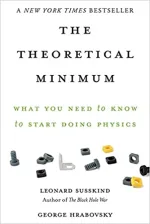

This much-needed book fills a gap between popular physics books that rely on metaphor to get their points across, on the one hand, and actual physics textbooks that use real mathematics, on the other. As such, it is a semi-popular book accessible to the motivated general reader, although it is aimed primarily at the undergraduate physics student who wants an overview of the subject based on the mathematical formalisms that constitute the heart of the discipline. This book was a spin-off from a popular Stanford University lecture series. Following its publishing success, similar volumes focusing on quantum mechanics and special relativity were published in 2015 and 2019, respectively.
2.A New Kind of Science
By: Stephen Wolfram , 2002
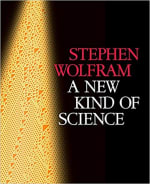

Wolfram (b. 1959) is a distinguished mathematician, physicist, computer scientist, and entrepreneur. He was born in London into a German-Jewish refugee family. He graduated from Eton and attended St. John’s College, Oxford, but then transferred to Caltech, where he received in PhD in particle physics in 1979—at the age of 20. At Caltech, he worked closely with Richard Feynman (see #16 and #18 below). Wolfram is probably best known for inventing the Wolfram programming language. However, his most important theoretical contribution has undoubtedly been his work on developing a new computational language based on cellular automata for the study of complex systems. His key claim is that physics must make the transition from traditional mathematics to computation-based formalisms if it hopes to bring complex systems into its purview. This book is an effort to present and document this vastly ambitious project. A paperback edition was released in 2019.
3.Our Mathematical Universe: My Quest for the Ultimate Nature of Reality
By: Max Tegmark , 2014
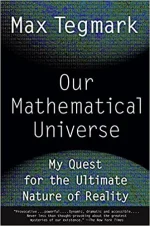

Tegmark (b. 1967) was born in Sweden to a Swedish mother and an American-born mathematician father (he goes by his mother’s surname). While still in high school, he designed and sold one of the earliest Swedish-designed video games. He traveled to the US for his higher education, receiving his PhD in physics in 1994 from UC-Berkeley, where he studied with the distinguished cosmologist Joseph Silk . Cosmology has been the focus of his research throughout his career. Today, Tegmark—who is a professor of physics at MIT—is best known for his claim that scientists’ usual commonsense belief that the mathematical models of physics are human-made representations of physical reality should be turned on its head. This means that Tegmark is a sort of Platonist, who believes that the abstract mathematical structure specifying the universe—which human beings do not invent, but discover—generates the physical world, not the other way around. This book lays out his reasons for adhering to this remarkable view in lavish detail. It is amazingly accessible to the motivated general reader, given the abstruse nature of the subject matter.
4.The Fabric of the Cosmos: Space, Time, and the Texture of Reality
By: Brian Greene , 2004
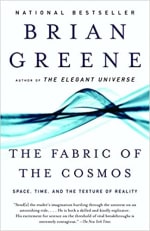

Greene (b. 1963) is a theoretical physicist at Columbia University. He works in the field of string theory but is better known for his lucid and elegantly written popular books (see #8 and #15 below), which have attracted a very wide audience. Both The Elegant Universe (#8 below) and The Fabric of the Cosmos were also made into successful television shows for the popular PBS science series NOVA, in 2003 and in 2011, respectively. In both series, Greene—who enjoys Hollywood-quality, boyish good looks—starred as an earnest yet congenial narrator. On a more serious note, this volume is a valuable study of the concepts of space and time and the roles they play both in theoretical physics and in our everyday, phenomenological experience.
5.A Universe from Nothing: Why There Is Something Rather than Nothing
By: Lawrence Krauss , 2013
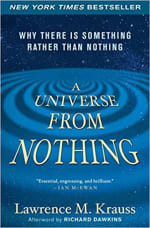

Krauss is a retired theoretical physicist who is primarily known for his popular writings and his activism in opposition to religion and in support of atheism. He has also been involved in a number of documentary and fiction films and has participated in numerous public debates with religious believers. He refers to himself as an “anti-theist.” The book under consideration here is both an exposition of fundamental cosmology and a putative refutation of one of the most important of the traditional “proofs” of the existence of God. This proof poses the question: “Why is there something rather than nothing?” It points out that the existence of any physical object is inherently contingent (non-necessary), meaning that so far as its own nature is concerned, it might just as well not exist. Therefore, the existence of any physical object can only be explained through the action of some prior physical cause. But this type of explanation cannot be applied to the existence of the universe as a whole. Therefore—so the theist argues—the only way to explain the existence of the physical universe itself is by positing the existence of a transcendent, inherently non-contingent (necessary) being—or, in layman’s terms, God. In this book Krauss claims that this argument is invalidated by modern physics in the following way. According to quantum field theory, matter may be brought into existence out of the ground state, or “vacuum,” through the spontaneous fluctuation of virtual matter-antimatter pairs.
6.A Brief History of Time: From the Big Bang to Black Holes
By: Stephen Hawking , 1988
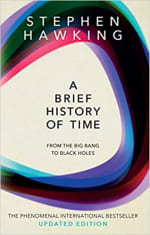

This book was a runaway bestseller based on the superstar status of its author. Hawking (1941–2018) was a highly distinguished cosmologist whose most important contribution consisted of his proof that black holes are subject to a sort of evaporation effect via what is now termed “Hawking radiation.” His status as an instantly recognizable icon and international superstar was also due in part to his heroic struggle to overcome amyotrophic lateral sclerosis, AKA Lou Gehrig’s disease. This book, the author’s first (see also #12 below), recounts the history of the universe from the big bang up through the formation of stars and ultimately black holes, with glances at wormholes, time travel, and other speculative topics along the way. The book was written at a sophisticated level which many ordinary readers found daunting. All the same, it became a publishing phenomenon, as readers around the world felt the need to display it on their coffee tables. It was reprinted in an illustrated edition in 1996 and in a more-accessible, abridged edition entitled A Briefer History of Time in 2008.
7.The Quantum Universe
By: Tony Hey and Patrick Walters, 1987


This is a serious and sophisticated introduction to the basics of quantum mechanics that is extremely well written and user-friendly. Making use of a popular-science approach that shapes the development of quantum theory in a narrative fashion, including interesting incidents and portraits of many of the individual scientists involved in that history, this book is an attractive alternative to a traditional physics textbook. A revised and updated edition under the title The New Quantum Universe was published in 2003.
8.The Elegant Universe: Superstrings, Hidden Dimensions, and the Quest for the Ultimate Theory
By: Brian Greene , 1999
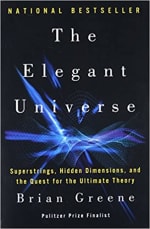

There is a fundamental defect at the heart of modern physics: the theory pertaining to very long length scales (general relativity) is mathematically incompatible with the theory pertaining to very short length scales (quantum theory). This brilliantly written book details efforts by the author and others to develop a unified theory of gravitation and the quantum realm. These theories are known by various names: string theory, M-theory, and others. This is Greene’s first book and the one that put him on the map as one of the foremost contemporary popularizers of fundamental physics (see #4 above). It was reprinted in 2003 and in 2010.
9.Time Reborn: From the Crisis in Physics to the Future of the Universe
By: Lee Smolin , 2013
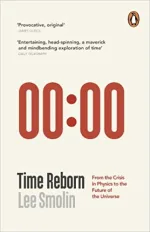

Smolin (b. 1955) is a distinguished cosmologist currently associated with the Perimeter Institute for Theoretical Physics at the University of Waterloo in Ontario, Canada. Like Brian Greene (see #4 and #8 above), Smolin is one of a small number of physicists working on the problem of the unification of general relativity and quantum theory. He is a proponent of the approach known as “loop quantum gravity.” In an earlier book titled The Trouble with Physics (see #24 below) Smolin criticized various approaches to theoretical physics, including some versions of string theory, observing that such theories cannot be experimentally tested even in principle. In this book the author focuses on the concept of time, arguing—against mainstream physics opinion—that time is real in the sense that our phenomenological experience of the passage of time corresponds to physical reality.
10.Physics of the Impossible: A Scientific Exploration of the World of Phasers, Force Fields, Teleportation and Time Travel
By: Michio Kaku , 2009
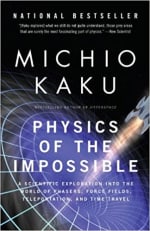

Kaku (b. 1947) is a theoretical physicist at City College of New York, as well as a prolific author of popular science books and host of several science-oriented documentary films and television series. The book under consideration here is a scientifically serious but accessible and entertaining exploration of what one might call “future technology.” Each chapter follows a similar pattern: beginning with a discussion of a current technology, Kaku explains how it might be adapted in order to make the abstract possibility of a given future technology into reality. For example, in a chapter on the possibility of creating new so-called “force fields” in the future, the author discusses present-day laser technology, including plasma windows, as a way of engaging in principled speculation about how entirely new types of “force fields” might someday be created. Other topics covered include invisibility, teleportation, time travel, extraterrestrials, parallel universes, and others.
11.The Fifth Essence: The Search for Dark Matter in the Universe
By: Lawrence Krauss , 1990


According to, the theory of general relativity (GR), the preeminent theory of cosmic expansion in contemporary physics, the universe is expanding at a much slower velocity than it should, given the calculated mass of all the matter visible to us through light and X-ray telescopes. Logically, this contradiction could impugn either GR or our estimate of the universe’s mass. Cosmologists have almost unanimously opted to believe that GR is correct and our estimate of the mass of the universe is the problem—namely, that it is far smaller than it ought to be. The difference between what we can see and we think we should be able to see, if GR is correct, is called the “missing mass,” or sometimes “missing matter” or “dark matter.” This book is about the various theories that have been advanced to explain what might account for this missing mass. An updated version of the book was published in 2000 as Quintessence: The Mystery of Missing Matter in the Universe.
12.The Grand Design
By: Stephen Hawking and Leonard Mlodinow , 2010
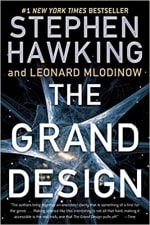

This follow-up to Hawking’s blockbuster A Brief History of Time (see #6 above) focuses on the same question as Krauss’s A Universe from Nothing (see #5 above): Why is there something rather than nothing? Hawking lays special emphasis on what has come to be called “the landscape,” meaning the idea that our universe is only one of an infinite number of physically separate universes. More specifically, he argues that the landscape is supported by M-theory, which is the only viable approach to a “theory of everything”—that is, to the unification of general relativity and quantum theory. (Note that the terms “fifth essence” and “quintessence” in Krauss’s two titles refer to the ancient Greek theory that the stars and planets are made of a special, fifth type of substance, or “essence,” in addition to earth, water, air, and fire.)
13.The Fabric of Reality: The Science of Parallel Universes—and Its Implications
By: David Deutsch , 1997
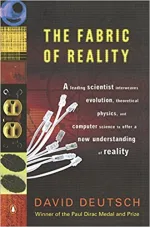

Deutsch (b. 1953) is a British physicist affiliated with the Department of Atomic and Laser Physics at the Centre for Quantum Computation in the Clarendon Laboratory at Oxford University. In this book he argues for the existence of parallel universes—not, however, on the basis of M-theory, as Hawking does in The Grand Design (see #12 above), but rather on the basis of the Everett or “many-worlds” interpretation of quantum theory. This is the idea that reality “splits” into different “branches” every time an “observation” takes place. In addition to the many-worlds concept, Deutsch also advances a separate—and even more controversial—argument to the effect that the universe is best understood as essentially a kind of quantum computer.
14.Quantum Aspects of Life
By: Derek Abbott , Paul Davies , Arun K. Pati , 2008
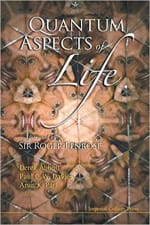

Though the authors’ names are listed alphabetically, the lead author is the distinguished physicist and highly prolific popular science writer, Paul C.W. Davies (b. 1946). This book, however, is not a breezy read for a general audience, but rather an anthology of cutting-edge scientific papers on the highly controversial topic described by the title. Most scientists and philosophers have a great deal of intellectual capital invested in the proposition that living systems are “nothing but” conglomerations of ordinary chemical reactions. And yet, no biologist can speak for very long about any living thing without invoking the notions of teleology (goal-directedness), normativity (success/failure), and agency (spontaneous activity). They may use the word “function” and they may claim that functions are fully accounted for by Darwin’s theory of natural selection, but that does not change the fact that living things and only living things are capable of spontaneously striving to achieve particular goal-states and succeeding or failing to do so. Several thinkers who have accepted the scientific challenge posed by this state of affairs have proposed that the coherence and coordination at the heart of life may have something to do with quantum field effects. This book is one of the first sober scientific reports of experimental work supporting the existence of quantum effects in biology, at least in limited areas, notably photosynthesis.
15.The Hidden Reality: Parallel Universes and the Deep Laws of the Cosmos
By: Brian Greene , 2011


Greene is one of our most gifted physicist/popular science writers (see #4 and #8 above). This book focuses on the notions of parallel universes and the multiverse (AKA “the landscape”) as these concepts are articulated by theories, such as string theory and M-theory, that aim to unify general relativity with quantum theory. In addition, Greene covers the topic of quantum computation as a model for physics, including the controversial Everett or “many worlds” interpretation of quantum theory (see #13 above).
16.Quantum Man: Richard Feynman’s Life in Science
By: Lawrence Krauss , 2011


This book is a biography of one of the most important physicists of the second half of the twentieth century, Richard Feynman (1918–1988). Feynman is best known for his contribution to the unified theory of matter, electromagnetism, and special relativity, AKA quantum electrodynamics (QED), as well as for the invention of the “path integral,” or “sum over histories,” formalism and accompanying “Feynman diagrams.” In 1965, he was awarded the Nobel Prize in physics—along with Sin-Itiro Tomonaga and Julian Schwinger—for this work. Feynman was a charismatic teacher whose three-volume Lectures on Physics, originally published in 1964, have been called “perhaps the most popular physics book ever written.” Feynman’s uniquely eccentric yet down-to-earth personal style was perfectly captured by a famous photo, published as the Lectures’ frontispiece, showing him playing the bongo drums. Late in life, Feynman attained rock star-like celebrity while serving on the Presidential Commission appointed by President Ronald Reagan to investigate the causes of the 1986 Challenger space shuttle disaster. In a tour de force of scientific showmanship in front of a worldwide, live television audience, Feynman performed a simple experiment to demonstrate the probable cause of the malfunction that brought down the Challenger. In summary, Feynman is a biographer’s dream: his life is almost uniquely compelling, both for its highly distinguished scientific achievements and its outstanding human interest.
17.Seven Brief Lessons on Physics
By: Carlo Rovelli , 2016
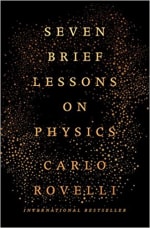

Rovelli (b. 1956) is an Italian theoretical physicist who is one of the international leaders in the field of unified theories of general relativity and quantum theory. In particular, he has worked with Lee Smolin (see #9 above and #24 below) and Abhay Ashtekar to develop the theory known as loop quantum gravity on the basis of mathematical ideas including Roger Penrose’s “spin networks” and the “sum over surfaces” concept introduced by Rovelli and Michael Reisenberger. The latter idea was the seed for the contemporary “spinfoam” approach to loop quantum gravity. The book under consideration here provides an elegant and poetic introduction to some of the most important and fundamental ideas underpinning the foregoing ideas at the frontier of physics.
18.The Character of Physical Law
By: Richard Feynman , 1967
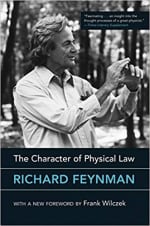

This book by a renowned physicist (see #16 above) is a discussion of the fundamental principles of modern physics that is light on mathematical equations, but extremely rich from a conceptual perspective. Topics covered include the concept of natural law, the relation between mathematics and physics, conservation laws, symmetry principles, the asymmetry between past and future, and probability and uncertainty within the scope of quantum theory. This distinguished summary of the essential features of modern physics has been reprinted several times, most recently in 2017.
19.The God Particle: If the Universe Is the Answer, What Is the Question?
By: Leon M. Lederman and Dick Teresi , 1993
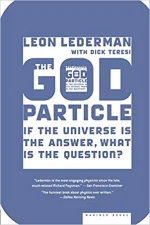

Lederman (1922-2018) was a distinguished theoretical physicist who was best known for his work on neutrinos—work for which he received the 1988 Nobel Prize in physics, along with Melvin Schwartz and Jack Steinberger . For many years, Lederman was director of Fermilab in Batavia, Illinois, whose Tevatron was at the time the most powerful particle accelerator in the US, and second only to CERN’s Large Hadron Collider (LHC) in Geneva. He was also a prominent supporter of the Superconducting Super Collider project, which was cancelled in 1993. This book, written together with science journalist Dick Teresi , is probably the best known of the half dozen works he authored for a popular audience. It consists of a thumbnail history of particle physics and particle accelerators, from an insider perspective. The title, The God Particle, alludes to the predicted but elusive Higgs boson, which was finally observed at the LHC in 2013—20 years after the book’s original publication. A new edition was reprinted in 2006.
20.The Emperor’s New Mind: Concerning Computers, Minds, and the Laws of Physics
By: Roger Penrose , 1989
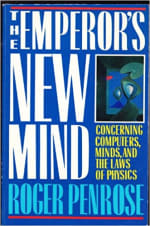

Penrose (b. 1931) is a prominent British mathematician and physicist. A former collaborator of Stephen Hawking’s (see #6 and #12 above), Penrose shared the 2020 Nobel Prize in physics, together with Reinhard Genzel and Andrea M. Ghez , for his work on the mathematics of spacetime singularities showing that black holes are a direct implication of Einstein’s general theory of relativity. He is also very well known for his discovery of Penrose tiling, a geometric concept with applications in the physics of quasicrystals. The book under consideration here is a tour de force of exposition of fundamental mathematical and scientific concepts, from Turing machines, truth, proof, and mathematical reality to classical mechanics, relativity theory, quantum theory, and cosmology. The culmination of the book is the last two chapters, which pose the question: What is the nature of the underlying physics of brain function, including the conscious mind? The book was reprinted in 1999 and 2016.
21.The Beginning of Infinity: Explanations That Transform the World
By: David Deutsch , 2011
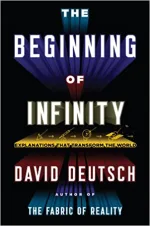

Deutsch is a distinguished theoretical physicist, who is also a gifted popular author. In his previous book, The Fabric of Reality (see #13 above), he focused on the contemporary efforts to unify general relativity and quantum theory to which he has been a major contributor. In this book, he takes a more philosophical approach to such perennial questions as whether the ultimate nature of reality is material (physical) or formal (ideal); what the nature of creativity is in relation to the origin of the universe and our understanding of it; and what role beauty plays in physical theory construction. The author also speculates about the cultural roots of science through time and across the major world civilizations, arguing that the development of mathematics and science in the West was basically a matter of chance.
22.The 4 Percent Universe: Dark Matter, Dark Energy, and the Race to Discover the Rest of Reality
By: Richard Panek, 2011


This book covers much the same ground as The Fifth Essence (see #11 above). However, it is considerably more up-to-date. Panek is an American popular science author with a gift for explaining the difficult concepts of advanced science in an understandable yet fundamentally accurate way. Whereas many popular science books attempt to cram all the amazing, or “gee-whiz,” counterintuitive features of contemporary science between one set of covers, the author of this book limits his discussion to the dark matter/dark energy conundrum—a decision that pays off handsomely in terms of clarity and accessibility. The “4 percent” of the title is the estimated proportion of the matter we can actually observe through our telescopes in relation to the total amount that we believe must exist, given the observed rate of the cosmic expansion and assuming the general theory of relativity is correct.
23.Book of Optics
By: Ibn al-Haytham , c. 1021 AD
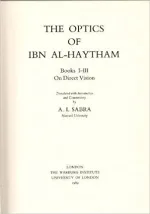

Ḥasan Ibn al-Haytham (965–c. 1040 AD) was the greatest student of optics and visual perception before the Scientific Revolution of the seventeenth century. Born in Basra in present-day Iraq, he was a distinguished mathematician and polymath who wrote with profound learning on physics, astronomy, philosophy, and theology, in addition to optics. It is for his work in the last field, however, that he is primarily known and for which he earned the sobriquet “the Father of Optics.” In the Latin-speaking West, he was known as “Alhazen” following the translation of the Book of Optics—Kitāb al-Manāẓir, in the Arabic original—into Latin around 1300. This work is a seven-volume encyclopedic treatise covering all the knowledge pertaining to vision that was known in the eleventh century. The breakdown of the principal subjects treated in the various volumes, or “books,” is as follows:
- Book I: light and color
- Book II: theory of visual perception
- Book III: errors in visual perception
- Books IV and V: experimental evidence relating to the theory of reflection
- Book VI: perceptual errors relating to reflection
- Book VII: theory of refraction
Though heavily influenced by Euclid’s Optics (c. 300 BC), and especially Claudius Ptolemy’s Optics (c. 170 AD), Ibn al-Haytham broke with their extromission theory of vision and introduced the essentially correct, Aristotelian-inspired intromission theory. The first three parts of the Book of Optics were translated into English in a critical edition in 1989 by the distinguished Egyptian-born scholar of Islamic Science, A.I. Sabra. Subsequently, A. Mark Smith published a translation of all seven books in four volumes (Books I-III in 2001; Books IV-V in 2006; Book VI in 2008; and Book VII in 2010).
24.The Trouble with Physics: The Rise of String Theory, The Fall of a Science, and What Comes Next
By: Lee Smolin , 2006
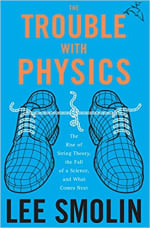

This book by distinguished Perimeter Institute physicist Smolin (see #9 above) has been significant in at least two ways. First, it presented the rationale behind efforts to unify general relativity and quantum theory, as well as an insider’s view of the history of the string theory movement, to a broad lay readership. Second, it blew the lid off the complacent claim that string theory could proceed on the basis of the “beauty” of the equations even in the absence of any conceivable experimental evidence. Thus, although squarely aimed at a popular audience and quite accessible, The Trouble with Physics has had an unusual influence on the debate within physics itself. Smolin’s claims have generated considerable pushback from his many critics. On the other hand, many other scientists feel that the controversy itself has been salutary for the physics community.
25.Three Roads to Quantum Gravity
By: Lee Smolin , 2000
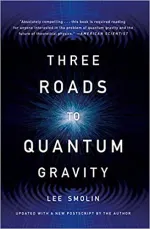

This is the author’s earliest attempt to present to a popular audience recent efforts to unify general relativity and quantum theory in a so-called “theory of everything.” The three “roads” to a unified theory of quantum gravity alluded to in the book’s title are string theory, M-theory, and loop quantum gravity. Smolin himself (see #9 and #24 above) is one of the foremost proponents of the last-named approach: loop quantum gravity. This book was published in new editions in 2001 and in 2017.
***Interested in diving headlong into the physics discipline? Start with a look at the Most Influential Colleges and Universities for earning a physics degree!
For additional study tips and tools, check out our full library of study guides for students.
Or find study tips, learning tools, tips for campus life and much more with a look at our Student Resources Headquarters.